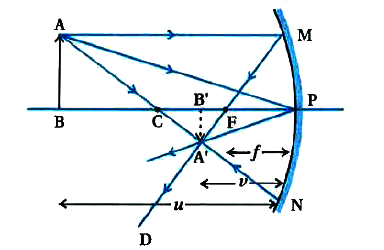What is emergence angle? Solution in Gujrati
Step by step video & image solution for What is emergence angle? by Physics experts to help you in doubts & scoring excellent marks in Class 12 exams.
Updated on:21/07/2023Topper's Solved these Questions
- RAY OPTICS AND OPTICAL INSTRUMENTSBOOK - KUMAR PRAKASHANCHAPTER - RAY OPTICS AND OPTICAL INSTRUMENTSEXERCISE - SECTION-B (NUMERICALS)(NUMERICAL FROM TEXTUAL ILLUSTRATIONS)
17 Videos
- RAY OPTICS AND OPTICAL INSTRUMENTSBOOK - KUMAR PRAKASHANCHAPTER - RAY OPTICS AND OPTICAL INSTRUMENTSEXERCISE - SECTION-B (NUMERICALS)(NUMERICAL FROM TEXTUAL EXERCISE)
45 Videos
- RAY OPTICS AND OPTICAL INSTRUMENTSBOOK - KUMAR PRAKASHANCHAPTER - RAY OPTICS AND OPTICAL INSTRUMENTSEXERCISE - SECTION-D (MULTIPLE CHOICE QUESTIONS (MCQs))(MCQs ASKED IN COMPETITIVE EXAMS)
142 Videos
- MOVING CHARGES AND MAGNETISMBOOK - KUMAR PRAKASHANCHAPTER - MOVING CHARGES AND MAGNETISMEXERCISE - SECTION D (MCQs ASKED IN COMPETITIVE EXAMS)
34 Videos
- SAMPLE QUESTION PAPER BOOK - KUMAR PRAKASHANCHAPTER - SAMPLE QUESTION PAPER EXERCISE - PART-B SECTION-C
5 Videos
Similar Questions
Suppose that the lower half of the concave mirror.s reflecting surface as shown in figure is covered with an opaque (non-reflective) material. What effect will this have on the image of an object placed in front of the mirror ?

View SolutionA small candle, 2.5 cm in size is placed at 27 cm in front of a concave mirror of radius of curvature 36 cm. At what distance from the mirror should a screen be placed in order to obtain a sharp image? Describe the nature and size of the image. If the candle is moved closer to the mirror, how would the screen have to be moved?
View SolutionWhich of the following is used in optical fibres ?
View SolutionElectric charge Q having mass M moves on a circular path of radius R with velocity →v, perpendicular to uniform magnetic field B. When a particle completes one revolution, work done by the field is _______
View SolutionTwo charges –q and +q are located at points (0, 0, –a) and (0, 0, a), respectively.
(a) What is the electrostatic potential at the points (0, 0, z) and (x, y, 0) ?
(b) Obtain the dependence of potential on the distance r of a point from the origin when r/a>>1 .
(c) How much work is done in moving a small test charge from the point (5,0,0) to (–7,0,0) along the x-axis? Does the answer change if the path of the test charge between the same points is not along the x-axis?
View SolutionIf A is angle of prism, D is angle of deviation, i is angle of incidence and e angle of emergence,then what is the correct relation between them ?
View SolutionA ray incident at an angle 53^(@) on a prism emerges at an angle at 37^(@) as shown,If the angle of incident is made 50^(@) ,which of the following is a possible value of the angle of emergence.
View SolutionIn an isosceles prism of prism angle 45^(@) , it is found that when the angle of incidence is same as the prism angle, the emergent ray grazes the emergent surface. Find the refractive index of the material of the prism.For what angle of incidence the angle of deviation will be minimum ?
View SolutionA ray incident at an angle 53^(@) on a prism emerges at an angle 37^(@) as shown. If the angle of incidence is made 50^(@) , which of the following is a possible value of the angle of emergence?
View SolutionA ray of light falls on a glass slab at an incident angle of 45∘ and refracted at angle of 30∘.
What is the measure of the angle of emergence 'e' ?
View SolutionA ray of light falls on a material body at an incident angle 60^(@) and refracted at angle 30^(@) . What is the measure of the angle of emergence 'e'?
View SolutionA ray of light falls on a material body at an incident angle of 30^(@) and refracted at angle 60^(@) . What is the measure of the angle of emergence 'e'?
View SolutionWhat is called the angle between the emergent ray and normal of a prism ?
View SolutionWhat is called the angle between the incident ray and emergent ray of a prism ?
View SolutionWhat is the relation between angle of prism (A), angle of deviation (d), angle of incident (i1) and angle of emergence (i2) ?
View Solution
